You’ll remember the day you first held your guitar, every component significant, but it’s often the overlooked pieces like guitar pickup covers that make a world of difference. They are more than just aesthetic add-ons; they are game-changers that can redefine your sound. I’m David Garcia, a passionate luthier with unquenchable curiosity towards these intriguing electric guitar parts. Today, let’s dive into the true influence of these unsung heroes – the guitar pickup covers.
What comes to mind when you hear ‘pickup covers’? For most, it’s probably the color or the finish. But can these seemingly simple additions affect the way your guitar sounds? Definitely! And that’s where things start getting interesting.
Understanding the impact of pickup covers on tone isn’t a conclusion reached overnight. It’s a fascinating journey that starts with a single pickup cover change and evolves into a quest for the perfect sound. A quest that made even the most hardened of guitar purists sit up and take notice.
Through our exploration of pickup covers, we’ll dissect everything – from their types, material options, to their effects on your guitar’s tone. We’ll dig deep into common concerns like feedback issues and guide you on installing and maintaining your pickups. A comprehensive journey through the world of guitar pickup covers awaits you. Let’s crank it up!
Understanding Pickup Covers and Their Types
Plastic vs. Metal Pickup Covers
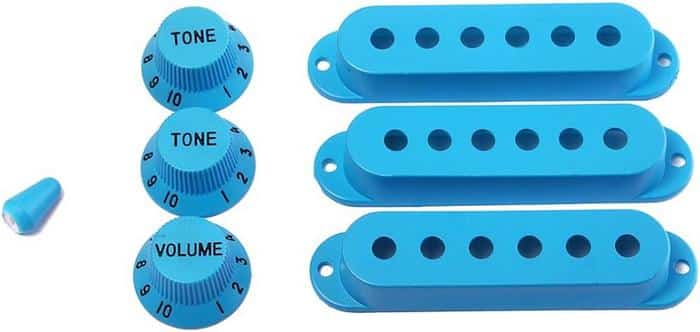
After getting acquainted with different types of pickup covers in the previous section, we now venture into the debate around plastic vs. metal pickup covers. From my vast experience, the choice between these materials boils down to individual tone preference and aesthetics.
In terms of tonality, metal covers, especially those made of brass or nickel, have a tendency to nibble a bit off the highs, giving your tone a warmer, more vintage feel. On the other hand, plastic covers tend to be more transparent, letting the pickups’ raw tone shine through, which can be bright and crisp.
But it doesn’t end there. Aesthetic preference is equally crucial when choosing pickup covers. Metal covers, with their classic sheen, can impart a vintage, timeless look on your guitar. Plastic covers, though, offer a wider range of color options, allowing you a greater scope to personalize your guitar’s look.
But keep in mind, this isn’t a one-size-fits-all situation. Each guitarist will have unique preferences. And the beauty of it is the freedom to choose and experiment to find what suits you best. So, while I prefer the warm tone and classic look of metal pickup covers, you might find your heart leans toward the vibrant tones and customizable aesthetics of plastic covers.
As we continue our exploration into pickup covers, remember that each of these factors – be it tone, aesthetics or even the following section about handling feedback issues – collectively contribute to your overall guitar playing experience.
How Pickup Covers Affect Your Guitar’s Tone
Handling Feedback Issues
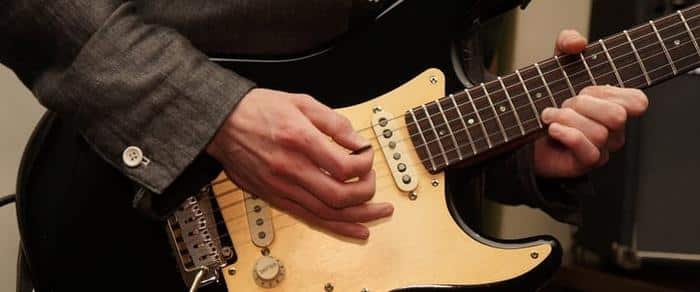
Moving forward from our discussion of guitar pickup cover impact on tone, another aspect vital to examine is how guitar pickup covers aid in handling feedback issues. Having crafted countless guitars and dealt with an array of issues, feedback is a common problem that I always ensure to tackle effectively.
Feedback occurs when the microphone amplifies sound from the speakers, creating a loop of increasing sounds levels. When playing your guitar, the amplifier might pickup frequencies resonating from the strings, resulting in unwanted feedback. This is where pickup covers come in. They provide a shielding effect, reducing your guitar’s susceptibility to external noise and feedback, thus enhancing the tone.
Wax potting is a technique I have practiced again and again to mitigate feedback issues further. This process involves dipping the guitar pickup into a mix of paraffin and beeswax. The wax seals any air gaps between the coil windings, bobbin, and pickup cover. These gaps often record and amplify external noise, leading to feedback. Therefore, a well-potted pickup ensures a smooth, feedback-free playing experience.
In conclusion, dealing with feedback issues is integral to maintaining an excellent guitar tone. Pickup covers and techniques like wax potting provide the necessary tools to achieve this. Though appeared simple, these elements contribute significantly to your overall playing experience.
Next, we’ll transition into how to install and upgrade pickup covers effectively, another critical factor in optimizing your guitar’s performance and tone.
Installing and Upgrading Pickup Covers
Understanding Pickup and Guitar Compatibility
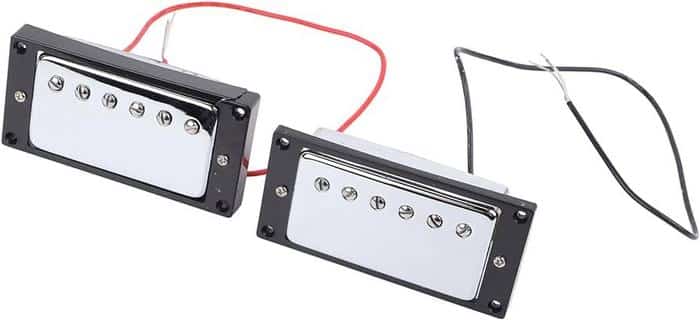
After installing or upgrading pickup covers, we now delve into another crucial element: understanding pickup and guitar compatibility. This area considerably influences every aspect we’ve covered so far, making it an indispensable part of our discussion. Armed with numerous stringed instrument publications under my belt, I’m eager to share my refined wisdom on this matter.
F spaced covers are relevant when matching pickup covers to the string spacing of your guitar. Their wider pole spacing aligns perfectly with the strings on most Fender guitars and many modern instruments. However, it doesn’t mean they’re exclusive to these guitars. My first bit of advice is to always verify the spacing of pickup poles before buying a cover. This ensures the pickup and guitar compatibility, affecting your instrument’s tone and performance drastically.
Remember, different pickups and guitars have different pole spacing. An incompatible cover may result in misaligned strings and pickup poles, affecting tonal balance and output. Detailed knowledge about the string-spacing of your guitar and your pickup’s requirements definitely give you an edge while changing pickup covers.
In conclusion, understanding the fundamental elements of pickup and guitar compatibility, such as F spaced covers and pickup poles spacing, can significantly enhance the tone and overall performance of your guitar. It’s an often overlooked aspect but profoundly contributes to effective pickup cover installation and upgrade. Through my years of experience, I’ve learned that compatibility is not just about aesthetics; it’s about bringing out the best in your instrument. Next, we’ll discuss maintaining and cleaning your pickup covers, another essential step in this process.
Maintaining and Cleaning Your Pickup Covers
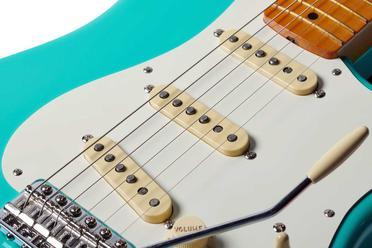
As someone whose hands have polished and preserved countless pickup covers over the years, I’ve realized that maintaining guitar pickup covers has an underappreciated role in enhancing both the aesthetics and tone of your cherished instrument. This is a creed of mine, born not just from research but years of hands-on experience and deep intimacy with my own stringed companions. You’re not just preserving components of your instrument, you’re ushering its soul into longevity, every swift polish on that pickup cover, every meticulous sweep on that pickguard.
The essence of maintaining and cleaning pickup covers might seem straightforward, yet it’s so much more complex than one would initially perceive, buzzing with its nuances and subtleties. Is there an art to cleaning and maintaining pickup covers? Delve a bit deeper into my years of wisdom, and you’ll find that the answer is an enthusiastic yes!
How do you grow conversant with this art of pickup cover cleaning then? It starts with understanding that every type of pickup cover—be it plastic or metal—has its unique cleaning demands. Cleaners that work miracles on metal covers might wreak havoc on the plastics. Also, remember that pickup covers are not standalone parts. They’re part of a broader system which includes the pickguard, and this needs to be accorded equal respect in the cleaning process.
Over the years, maintaining my own pickup covers has become as second nature to me as tuning the guitar itself. I approach both tasks with equal precision, knowing that both are integral to the grand symphony that is my guitar’s performance. Regrettably, I’ve seen too many guitars decline rapidly due to neglect and poor maintenance of their pickup covers and pickguards.
So, allow me to pass on some of my proven practices. First, remember that consistency is key. This is not a once-a-year chore, but a consistent task that should be interwoven with your regular guitar maintenance. Secondly, invest in high-quality cleaning supplies relevant to your pickup cover material. Whether your pickup cover is plastic or metal, specific cleaners are designed to preserve and enhance these materials effectively.
When you’re cleaning, be gentle, like you’re caressing the strings before that sweet bend in your solo, not attacking the guitar’s surface aggressively. It’s also essential to remember the ‘why’. While pickup cover cleaning keeps your guitar looking its best, it also plays a part in maintaining your instrument’s audio performance. And if you remember that, every swipe of the cloth, every tiny bit of effort, becomes a symphony in itself, a melody of maintenance.
Guitars are capable of driving an emotional connection so unique that each string strum feels like it’s being played directly on your own heartstrings. As custodians of these beautiful instruments, it’s our duty to ensure they’re catered to with intricate care, and maintaining and cleaning pickup covers is an integral part of that loving responsibility.
As we continue our comprehensive endeavour to understand pickup covers in the sections to come, I hope this insight into the art of maintenance and cleaning establishes an enduring narrative, one that resonates with your own experiences as you navigate your personal guitar journey.
Where to Buy Quality Pickup Covers
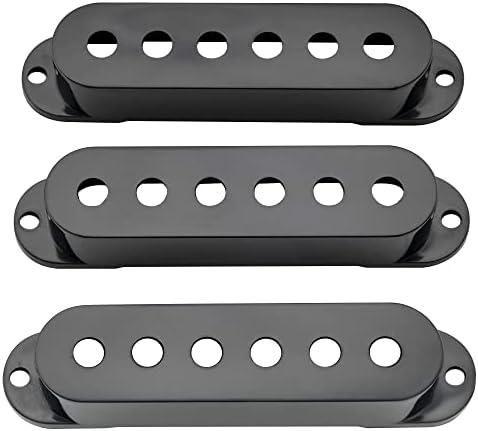
In my journey through the world of guitars, as a member of the New England Luthiers group, I’ve been fortunate to tap into a rich network of passionate craftsmen and enthusiasts. This reliable circle has directed me towards reliable sources for purchasing quality guitar pickup covers—let me share this knowledge with you today.
Finding the right pickup cover is like finding the perfect accessory to complete your outfit. But where do you look? My first recommendation would be good old-fashioned brick-and-mortar stores. These places not only sell guitar hardware, but they also provide an opportunity to ask questions, get expert opinion, and physically try out different pickup covers before you purchase.
Locally owned music stores often have a selection of guitar accessories, including pickup covers. Many of these businesses have been serving their communities for decades, and their employees have a wealth of knowledge about guitar hardware. Plus, supporting local shops helps keep your dollars in your local community. A unique find in a store such as GarageBand Music or Rusty Frets Guitar Shop could end up being the perfect accessory for your six-stringed friend.
For those who prefer online shopping, there are a multitude of options as well. Websites like Sweetwater, Guitar Center, and even Amazon offer a vast array of pickup covers. I advise reading customer reviews and doing some research to ensure you’re getting a quality product. Websites like Reverb or eBay can also offer vintage or used pickup covers for a unique aesthetic touch. Remember, the most important thing isn’t just how it looks, but how it affects your sound quality.
If you’re looking for something truly special to complement your guitar and you want to support artisan creators, custom shops like Bare Knuckle Pickups or Lollar Pickups offer handmade pickup covers. These types of shops often offer customization options, and their commitment to craft guarantees you’re getting a top-notch product.
Just as you finish an outfit with an accessory that reflects your style, completing your guitar with a quality pickup cover can provide just the right personal touch. Remember, beauty is in the eye (or ear) of the beholder, so choose a pickup cover that not only enhances your guitar’s tone but also reflects your unique musical voice. Aside from the tone, the right pickup cover can also add a visual flair that makes your guitar truly yours. Happy hunting!
FAQs
What impact does a guitar pickup cover have on tone?
What role does the guitar pickup cover play in aesthetics?
What are guitar pickup covers made from and why?
How do guitar pickup covers affect the maintenance of the guitar?
Conclusion
It’s time to draw our exploration of pickup covers to a close, but the journey is just beginning. Ready to enrich your guitar’s tone? From understanding the distinct types and different materials to evaluating how they influence your guitar’s tone, we’ve delved deep into the world of guitar pickup covers. We’ve also tackled feedback problems and discussed how to install or upgrade these components.
Equipped with this knowledge, you’re ready to maximize compatibility with your instrument, keep your gear clean and maintained, and know where to find quality covers.
I hope that my expertise, gained through years of research-oriented instrument design and construction, has helped enrich your understanding of this small but important fixture. Remember, every part of the guitar serves an important purpose, and that includes the humble pickup cover.
As you continue your journey in the world of guitars, keep this guide close to hand. Whether you’re a seasoned player looking to upgrade or a novice exploring the intricacies of your instrument, understanding the role and impact of pickup covers provides a new level of insight. So, embrace the opportunity to experiment, explore, and enhance your guitar’s potential. The beautiful symphony of tones awaits you!